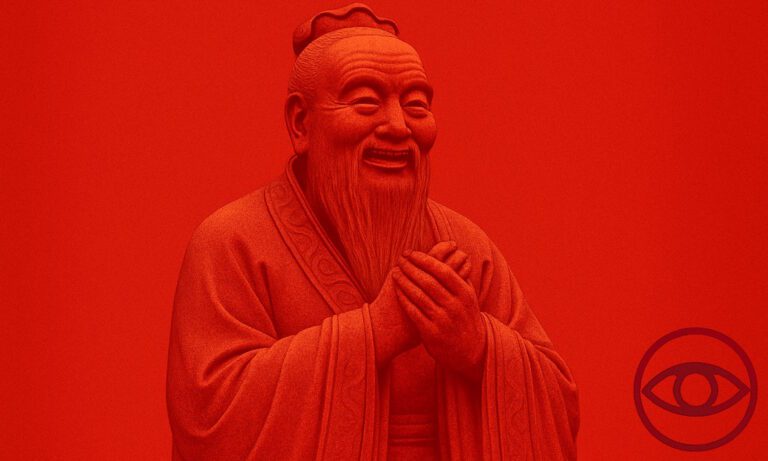
The Chinese government is messaging loudly that a China-centric international order would best serve the interests of the Global South. The current crisis in Sri Lanka seems to run counter to that narrative.
After months of unrest, Sri Lankan president Gotabaya Rajapaksa fled the country on July 13. In China, one of the island’s key creditors over the past two decades, the main reaction was silence.
For months, Chinese messaging has pushed the idea that ‘the West,’ first and foremost the United States, conduct world affairs with at best disregard, and often malice, toward the Global South. The implicit promise at the heart of Beijing’s discourse is that a China-led world order would be fairer and more advantageous for developing nations. Now, these aspirations to be seen as the champion of the Global South must contend with the collapse of a country whose prosperity was widely perceived to rely on China.
Champion of the Global South
The Sri Lanka crisis comes just as the Chinese diplomats and state media are promoting China as a worthy alternative provider of global stability. A large part of that effort consists of denigrating ‘the West’, especially in the eyes of the countries of the Global South. For instance, in May, an illustration showing North America and Europe full of resources taken from “overexploited” Africa and South America was shared among others by Chinese Foreign Ministry spokesperson Zhao Lijian and the Consul General in Belfast, two prominent ‘wolf warrior’ diplomats who specialize in jingoist takes on world events, as well as by several CGTN-affiliated accounts on Twitter and Facebook.
In the first half of 2022, Chinese propagandists also discredited democracies’ attempts at global governance more explicitly. They denounced the lack of representation afforded by groupings like the G7, using similar arguments to delegitimize sanctions against Russia. In addition, China consistently portrayed the West as militaristic, in contrast to its own supposedly pacifist outlook on the world.
For instance, in late June and early July, several Chinese diplomats relayed the message that “the US bombs, China builds” on both Twitter and Facebook. Chinese messaging has also portrayed Western sanctions against Russia over its invasion of Ukraine as destructive to Global South countries, accusing the US and its allies of threatening developing countries’ food security. Beijing’s underlying strategy is to portray democracies as a selfish minority acting against the interests of the world’s majority, with China firmly at the head of this majority.
This messaging has been accompanied by several initiatives meant to inspire confidence in the Chinese state’s ability to offer a (better) alternative world order. The Global Development Initiative on economic cooperation and the Global Security Initiative on a new security architecture show that Beijing is intensifying its longstanding efforts to reshape the international order.
Likewise, China’s constant promotion of the BRICS format as the most representative grouping at the center of global governance shows it intends to use its notional role as champion of the Global South to draw the legitimacy needed to rewrite the rules.
Ties That Bind
However, Sri Lanka’s turmoil flies in the face of Chinese messaging in the Global South. International headlines about the 99-year lease on the port of Hambantota that Sri Lanka granted to China in 2017 brought global attention to, and to some extent inflated, the importance of both countries’ financial ties. Later that same year, US Vice-President Mike Pence piled on by singling out the South Asian island as the quintessential example of Chinese “debt diplomacy.” And while many experts now argue that there is no such thing as “Chinese debt traps,” the perception that Sri Lanka’s prosperity is inextricably tied to China remains widespread.
In addition, while most experts contest that China deliberately set Sri Lanka up to fail, the fact of the matter remains that Beijing is now Colombo’s largest individual creditor. Most news reporting estimates that China accounts for roughly ten percent of Sri Lanka’s overall debt. However, more thorough assessments that take into account lending to Sri Lankan state-owned enterprises conclude that China’s share of Sri Lanka’s debt is closer to 20 percent, far ahead of any other individual lender to Colombo. The Asian Development Bank holds about 15 percent of the debt, the World Bank about ten, while the next creditor states, Japan and India, hold respectively nine and two percent of Sri Lanka’s debt.
Beyond the financial ties that bind both countries, China also has a problematic relationship with the family of now-former president Gotabaya Rajapaksa. In 2015, at least $7.6 million went directly from a majority state-owned Chinese corporation to Gotabaya’s brother’s campaign expenditures.
Many of the China-financed projects that weigh heavily on Sri Lanka’s balance sheet, such as the Mahinda Rajapaksa International Cricket Stadium or the Mattala Rajapaksa International Airport, were built in sparsely populated Hambantota, the Rajapaksa family’s sleepy home district.
As recently as January this year, Chinese Foreign Minister Wang Yi met Gotabaya Rajapaksa while Chinese diplomats and state media refuted claims that Beijing had financed “white elephants” in the country.
Squaring the Circle
The importance of China relative to Sri Lanka’s other creditors and its proximity with the Rajapaksa family make it difficult for Beijing to fully distance itself from the current crisis on the island. China’s responsibility in the crisis is further solidified by recent media reports that explain how it allowed the Rajapaksa government to take on even more debt in 2020 and 2021, even as several Sri Lankan officials were arguing that the country should instead seek a bailout from the International Monetary Fund.
Now, China is caught between a rock and a hard place. Many of the countries it has loaned billions to under the Belt and Road Initiative (BRI) are facing a situation comparable to Sri Lanka’s. BRI recipients all around the world will be watching Beijing’s treatment of Colombo. With countries like Zambia or Pakistan reliant on continued access to Chinese credit to stay afloat, Beijing’s reluctance to bail out the South Asian island may prompt strategic realignments in more than one capital. On the other hand, China is facing a domestic downturn and can no longer afford its pre-COVID-19 profligacy.
This conundrum explains why the Chinese Foreign Ministry, usually so prompt to give voice to the concerns of the Global South, has been uncharacteristically laconic when it comes to Sri Lanka. In the week during which the protesters took over the presidential palace in Colombo, foreign media outlets were the only ones quizzing the Foreign Ministry about the South Asian island. The Foreign Ministry’s answers were short and bland. By contrast, the institution was far more expressive when answering a Xinhua question about Western lending in Africa.
While the Foreign Ministry remained guarded, individual Chinese diplomats tried to go on the offensive. The Consul General in Beirut and the Consul General in Belfast shared a Deutsche Welle pie chart with a dollar bill covering the largest portion of Sri Lanka’s debt, labeled “market borrowings.” In case the message was unclear, the Consul in Belfast also commented that “most of Sri Lanka’s debt is held by Western institutions.” The pie chart was also reimagined by the Global Times to further obfuscate the importance of China as a creditor to the South Asian nation. Shared by MFA spokesperson Zhao Lijian and by the Consul General in Cape Town, the new pie chart came with text explaining that “Western countries” had enabled the “exploit[ation of] Sri Lanka’s every penny.” Chinese state media, from China Daily to CGTN, further amplified this narrative.
Chinese diplomats and state media have tried pinning Sri Lanka’s financial collapse on Western countries. However, the size of the Chinese state’s financial engagement in Sri Lanka, as well as its problematic ties with the family of the now exiled president, make that claim shaky at best.
For years, the United States advertised the 99-year lease on the port of Hambantota as illustrative of the strings that come attached to Chinese credit. Now, BRI recipients all around the world are watching as their creditor stands by while Sri Lanka falls apart. If Sri Lanka is perceived as the end state for countries that come to rely on Beijing, it will take more than social media propaganda to convince Global South nations to support China’s attempts to reshape the international rules-based order.
Written by
Etienne Soula
EtienneSoulaEtienne Soula is a Research Analyst with the Alliance for Securing Democracy based in Brussels. His research focuses on China’s growing political and economic assertiveness in the transatlantic space.


